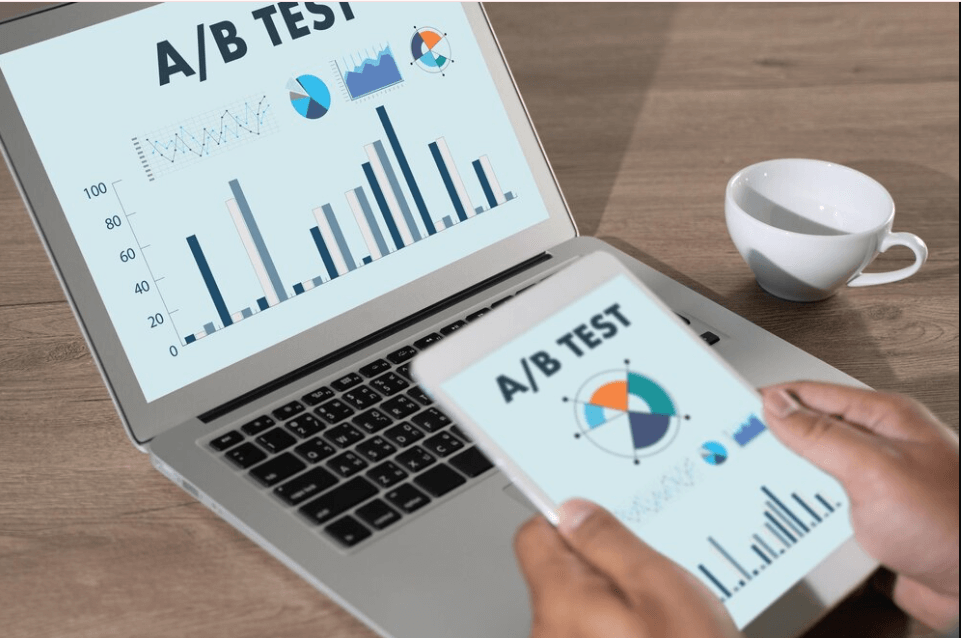When was the last time you clicked a button on a website or purchased a product online, almost effortlessly? It’s likely that that seamless experience didn’t happen by accident. Conscientious marketers and product designers know better how important A/B testing is for delivering usable experiences wind up turning into Conversions. Loading. Not sure if you need to upgrade your conversion rate for your business, or how where to get started?
We’ve got your covered in this blog post. We will look at what A/B testing Does, how to increase your conversion rate with it, and the best methods for deploying it as part of a comprehensive strategy.
What Is A/B Testing?
The purpose of A/B testing (also known as split testing) is to compare two or more versions of a webpage, email or ad and see which one performs better. In essence, you show one group of users version “A” and the other version “B”, then observe which performs better against your chosen metric.
Metrics to test can include:
- Click-through rate (CTR): How often users click on a button, link, or ad.
- Conversion rate: How many users complete a desired action, such as signing up, purchasing, or downloading.
- Bounce rate: How many users leave a page without taking any action.
By implementing the winning variation, you can make data-backed decisions and drive better results without resorting to guesswork.
Why A/B Testing Is Crucial for Conversion Rate Optimization
Want more sign-ups? Higher sales? Fewer abandoned carts? A/B testing helps pinpoint what works and what doesn’t, transforming the user experience into one that guides your audience smoothly toward conversion.
Here are some key reasons why A/B testing is a game-changer for conversion rate optimization (CRO):
- Data-Driven Decisions: Stop guessing and start acting on evidence of what your audience actually responds to.
- Customization: Tailor your website or campaigns to your audience’s preferences.
- Cost Efficiency: Small tweaks made through A/B testing can lead to big returns over time.
- Reduced Risk: By testing incremental changes, you minimize the risk of turning users away with drastic updates that fail.
How to Run an Effective A/B Test
1. Define Your Goals
Before jumping in, clarify the specific goal you’re trying to achieve. Is it to increase email signups? Drive more purchases? Maybe reduce cart abandonment?
Clearly defined goals will help guide what you test and how you measure success.
2. Identify What to Test
While you can test almost anything, some key areas to consider include:
- Headlines and Copy: Does a bold claim work better than a subtle one?
- Call-to-Action (CTA): Test different wording, colors, or placements. For example, does “Get Started” perform better than “Sign Up Now”?
- Page Layouts: Rearrange sections or try a minimalist layout to see what improves engagement.
- Visuals: Different images, videos, or font styles can evoke different emotions.
- Checkout Process: A streamlined checkout can reduce friction and improve champion rates.
3. Create Hypotheses
Before executing the test, write down your assumptions. For example:
- “If we use a larger CTA button, the click-through rate will increase.”
- “If we replace stock photos with authentic team images, conversions will improve.”
4. Split Your Audience
Next, divide your traffic into random (and equal) groups to ensure reliable results. One group (Group A) will see the original version, while another group (Group B) will see the variation.
Your audience size matters. Smaller sample sizes can lead to inconclusive or misleading results. Tools like Optimizely or Google Optimize can help ensure randomization and proper segmentation.
5. Run the Test for Enough Time
A common mistake is running an A/B test for too short a time. For meaningful insights, consider factors like:
- Traffic volume: How many visitors access the page daily or weekly? The more you have, the faster you’ll gather sufficient data.
- Statistical significance: Ensure that the difference in performance metrics between A and B is not due to chance. Many A/B testing tools can calculate this for you.
6. Analyze the Results
Look at the key metrics you initially set out to optimize. Did version B outperform version A? Or was there no meaningful difference?
Remember, a decrease in performance is just as valuable to know as an improvement. Both outcomes provide insights.
7. Implement the Winning Variation
Once you identify the winning version, apply it to your live platform. But remember, A/B testing is an iterative process. There’s always room to test further variations, building on what you’ve already learned.
Common Mistakes to Avoid When A/B Testing
While A/B testing can deliver incredible insights, avoid these pitfalls that could skew your results:
- Testing Too Many Variables at Once: If you change the button color, headline, and layout all at once, it’ll be impossible to isolate what caused the improvement (or downturn).
- Small Sample Sizes: Testing on a dozen users won’t give you the clarity needed to make robust decisions. Reliability increases with statistically significant sample sizes.
- Stopping the Test Too Early: Even if version B takes an early lead, give your test enough time to account for factors like cyclical traffic patterns or different user behaviors over time.
- Ignoring Segmentation Insights: Segment your audience if needed. What works for one group (e.g., mobile users) might differ for another (e.g., desktop users).
Tools to Simplify A/B Testing
Implementing A/B testing may sound complex, but with the right tools, it’s easier than you think. Here are some popular options:
- Google Optimize (Free): A straightforward tool for testing simple changes.
- Optimizely (Paid): Ideal for enterprises looking for advanced features like multivariate testing.
- Crazy Egg (Paid): Visual heatmaps paired with A/B testing tools to better understand user behavior.
- VWO (Paid): A user-friendly platform for A/B, multivariate, and split URL testing.
Real-Life Example: How A/B Testing Boosted Conversion Rates
The team at Unbounce provides an example of A/B tests. By simplifying their landing page headline and call-to-action(CA), they saw their conversions improve an impressive 41 percent. Results showed that a shortened and more on-point landing page did better than longer more content-rich pages for the particular target audience.
This is just one instance of how experimentation via split-testing might produce surprising and powerful results.
Start Optimizing with A/B Testing Today
The power of the A/B test can work for companies of all shapes and industries. You can collect strong data by trying different designs, notes and overall setup; this both increases your conversion ratio and makes things its target audience will find most rewarding to look at.
The secret to increasing conversions is to take your brain out of the equation. Use the right tools, set goals and continue testing small steps in order to make big changes happen. Remember, after you test and the numbers show a winner, go back into those better benefits–and watch for pockets of improvement that didn’t exist before.





